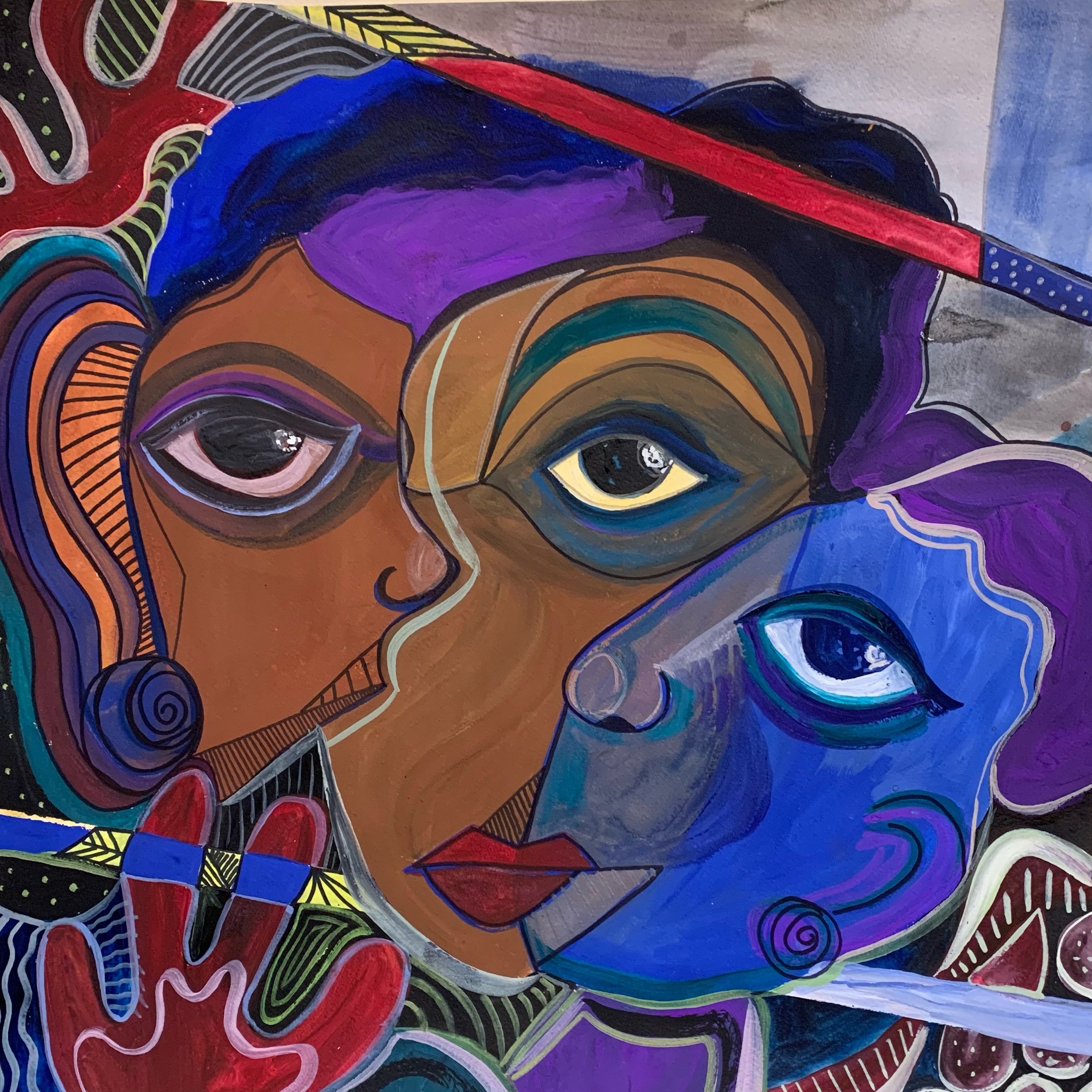My Alter Ego
by Kanya Dayananth
Dimensions: 16" x 16"
Media: gouache, marker, oil pastel
My first cardiac arrest was a gentleman who had been napping at home, he was the same age as my father. His wife had found him unconscious in bed. I entered the room feeling askew, my heart pounding and mouth dry behind my N95 mask. While an officer kept the family sequestered downstairs, I sequestered my humanity to a deep corner of my heart. In the first moments of a cardiac arrest, I become a clinical android, it is the only way I can objectively and logically make decisions while managing a chaotic, undulating environment. I was blind to the wife’s anguish as she fled the room, and I saw not a loving husband nor a doting father on the floor, rather I saw a 60-year-old male with 5 minutes of CPR shocked twice on an AED now in asystole on my monitor. I saw an uncontrolled airway with copious secretions and a pale, flat proximal tibia ideal for an IO. My mind blurs the faces of every deceased patient I have ever seen. I still remember how the wife had her hair neatly spiraled with a clip, but I have no idea what her husband looked like even though I spent far more time with him. After 20 minutes of full-throttle efforts with steady patient decline, I called the doctor to confirm time of death. As I found the gentleman’s family huddled in his old office, the emotions I had neatly folded away started to seep out into a knot in my gut and a tightness in my throat.
Just over a year later, my 42nd cardiac arrest. I don’t remember how old the patient was, or what their house looked like, let alone the details of the call. My heart didn’t race as I entered the room and saw a body on the floor and I know there wasn’t a lump in my throat as I called the doctor for the time of death. It was just another day at work.
Pain and trauma can physically change your brain’s biology [1]. My time working as a paramedic during COVID-19 changed me. I painted this piece in the height of the pandemic when deaths were sky-rocketing and I found myself in the center of the battlefield. Each day brought new horrors: the bodies of an elderly couple found rotting in their house after testing COVID positive with no family nearby to check on them; a young father who hanged himself on Thanksgiving Day, his mother explaining to me that he had lost his job during the pandemic.
I used to joke that when I stepped into my steel-toed, black leather work boots I became my alter ego—a hardened, nonchalant medic. And when I showered after a long work day I turned back into my sensitive, introverted self. But at some point during the pandemic I stepped into my work boots and never stepped out. This painting represents my struggle to mesh the pre-pandemic version of myself, the young woman filled with compassion and hope, with my pandemic self who has experienced the failures and grief of working in healthcare. As I continue on in medical school and beyond, I don’t want to lose my authentic self who is optimistic and empathizes deeply with patients. However, I realize now that there has to be some level of separation to combat burnout and compassion fatigue. Much like the variety of colors and shapes in the painting, we are all unique, dynamic individuals battling internal struggles but also with infinite dreams for the future.
Sources
Yehuda, Rachel, and Joseph LeDoux. “Response Variation Following Trauma: A Translational Neuroscience Approach to Understanding PTSD.” Neuron, vol. 56, no. 1, 2007, pp. 19–32., https://doi.org/10.1016/j.neuron.2007.09.006.
Kanya Dayananth is a first-year medical student at the UTCOMLS.
